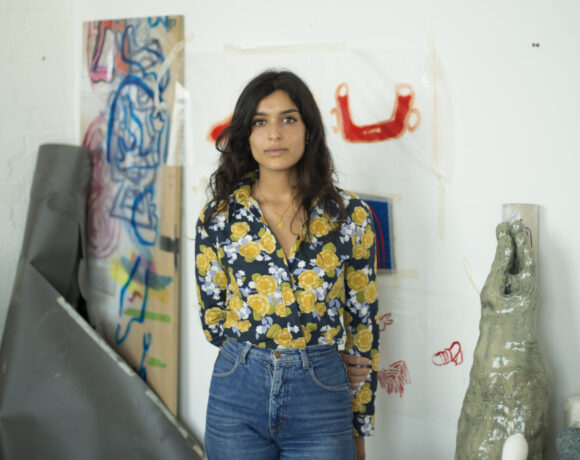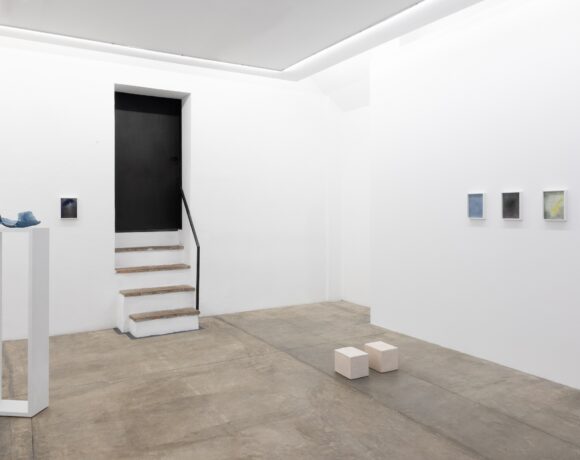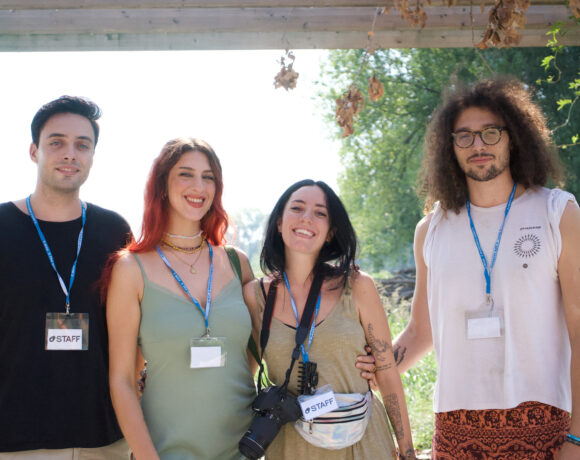The Spazio Volta Project, an exhibition space that overlooks the entrance square of the upper part of the city, takes shape in Bergamo. After the Open Cinema review, the space will open in May with a group exhibition and an editorial project, under the artistic direction of Edoardo De Cobelli.
Eleonora De Beni: Spazio Volta is a work in progress. As a nascent non-profit space, will it be oriented towards young emerging artists or will it follow a different imprint?
Edoardo De Cobelli: As a non-profit space, Spazio Volta will be a unique reality. For its conformation, first of all, as a showcase overlooking a historic complex, and for its visibility, given its position in the urban fabric of the city. The programming is designed with a view to openness and inclusiveness, both for future collaborations and for the invited artists. Young emerging artists from the Carrara Academy will be hosted, but also international artists who will exhibit their work in Italy for the first time. The Open Cinema programme, which ended last weekend, was the result of a first collaboration, while in May we will host a group exhibition with works by Francesco Pacelli, Luca Petti, Antonio Gramegna and Brinanovara.
As a young curator, are you looking for a clear and defined vision of space or do you allow yourself the risk of being changeable and multifaceted?
Any curatorial reasoning must start from the nature of the place in which it intervenes. Moving in this case within a strongly characterized architectural setting – a fourteenth-century fountain in turn part of a former church – the artistic vision can only be shaped around this identity that animates the project. Each invited artist will have to deal with the context, consisting of a stone vault and a crescent-shaped window that allows the eye to embrace the entire room. The challenge is to enhance these characteristics and build a radical programming around them, which is able to capture the interest of the occasional passerby without giving up experimentation. In May, the postponed programming from 2020 will begin, with a collective and an editorial initiative in collaboration with the REPLICA archive that will develop in an adjacent showcase and will make available a series of artist’s books that will cyclically vary according to themes and insights chosen from time to time. In collaboration with the library, we are setting up a reading space dedicated to some significant titles and, we hope, also to a series of meetings and presentations. Spazio Volta will therefore be an open reality, which goes beyond the concept of showcase or exhibition space.
On March 14, the schedule of Open Cinema ended, an event that brought together works of video art with found footage from a film archive. What was the meeting point between Spazio Volta, Lab80 film – Cinescatti Archive and Seven Gravity Collection? Was it an intertwining in the name of a reciprocal exchange?
The idea of an “outdoor” cinema was born in the months when cultural venues and cinemas were closed. Any place intended for culture was closed and reflecting on the public dimension of the space, which is offered to the view from the outside in total safety, I imagined recreating the atmosphere of a cinema, opening the comparison between different realities. Lab80 film, a historic cinema company in Bergamo, immediately accepted the invitation by making the Cinescatti Archive available, which contains material on film from 1926 to the 1980s. The dialogue between video art works and archival material developed on two different formal levels: a series of naked wall projections, including the work Anno X by Jacopo Martinotti and the recovered and digitized found footage, and the screenings, like the work of Tobias Kaspar, Andrew Norman Wilson or Rebecca Digne, the latter coming from the Seven Gravity Collection. The atmosphere of each work has oriented the formal reading key, to which is added a thematic reading. Rebecca Digne’s video work, for example, in which the protagonist looks towards the camera inside a dull and empty cinema hall, is a clear reference to the situation we are experiencing and to the suspended atmosphere from which the idea of the collaboration itself.
How does this new initiative fit into a culturally rich city like Bergamo?
Bergamo, although not a big city, has a dynamic artistic reality and has always been sensitive to cultural proposals, as evidenced by the willingness of the Municipality to sponsor this initiative, or what has been done in the past with Contemporary Locus and The Blank Contemporary. The GAMeC is an excellent museum and the conditions to bring contemporary art truly to the center of the cultural life of the city exist.
How was the response from the public?
Surprisingly positive. The public is beginning to identify a place that has long been unused as a living and purposeful space. Last year, during the difficult period that the city of Bergamo was going through, we wanted to use the showcase to convey a message of hope. The response was truly exceptional and unexpected. We hope that with the gradual reopening in the coming months we can also welcome visitors from abroad and from other regions.
Eleonora De Beni
Info:
Instagram: www.instagram.com/spaziovolta
 View of Spazio Volta, E quindi uscimmo a riveder le stelle, light installation, 2020
View of Spazio Volta, E quindi uscimmo a riveder le stelle, light installation, 2020
 Tobias Kaspar, Back Row, 21 min, color, audio, 4K or full HD, Courtesy Tobias Kaspar, Galerie peter Kilchmann, Zurich; Galerie Urs Meile Beijing; Lars Friedrich, Berlin, VIVII, Oslo
Tobias Kaspar, Back Row, 21 min, color, audio, 4K or full HD, Courtesy Tobias Kaspar, Galerie peter Kilchmann, Zurich; Galerie Urs Meile Beijing; Lars Friedrich, Berlin, VIVII, Oslo
 Lab80 film – ArchivioCinescatti
Lab80 film – ArchivioCinescatti
 Agnieszka Mastalerz & Michał Szaranowicz, Primary Swarm, 2019, 40 min
Agnieszka Mastalerz & Michał Szaranowicz, Primary Swarm, 2019, 40 min
 The fourteenth-century fountain on which the former Church of San Rocco rests, Piazza Mercato delle Scarpe, Bergamo
The fourteenth-century fountain on which the former Church of San Rocco rests, Piazza Mercato delle Scarpe, Bergamo

is a contemporary art magazine since 1980






NO COMMENT